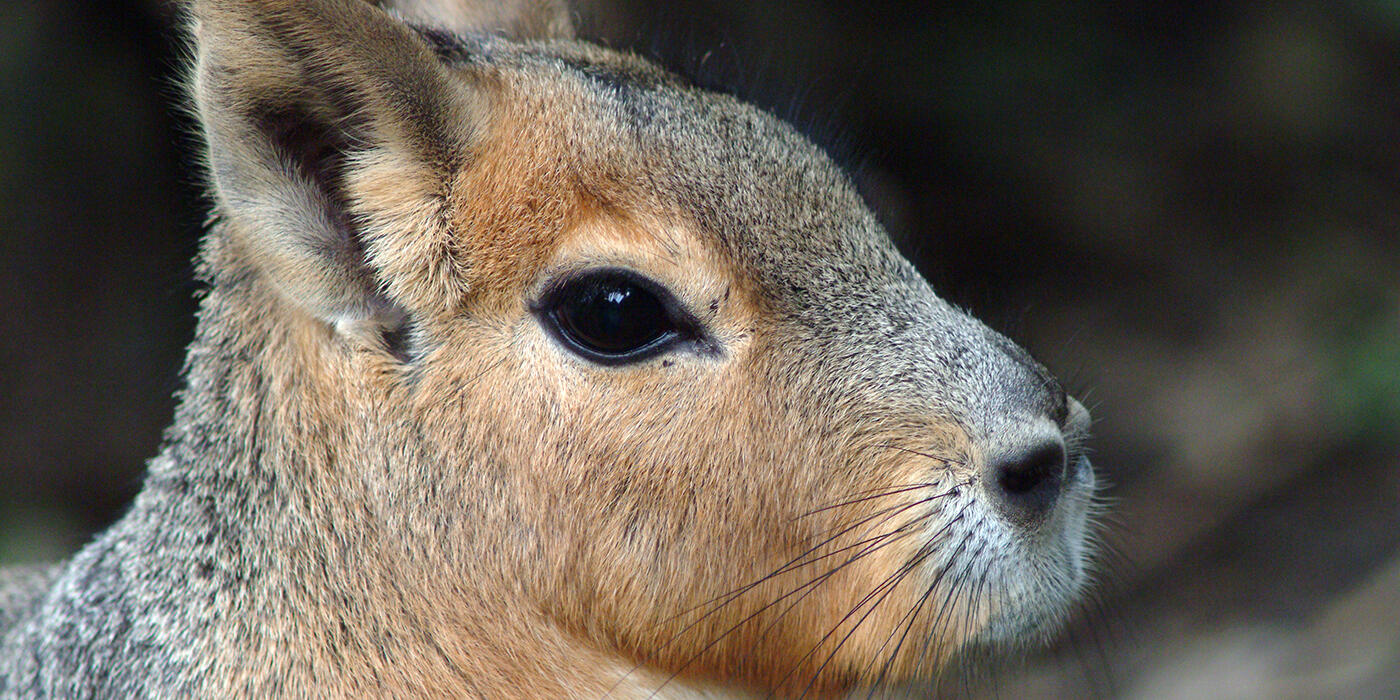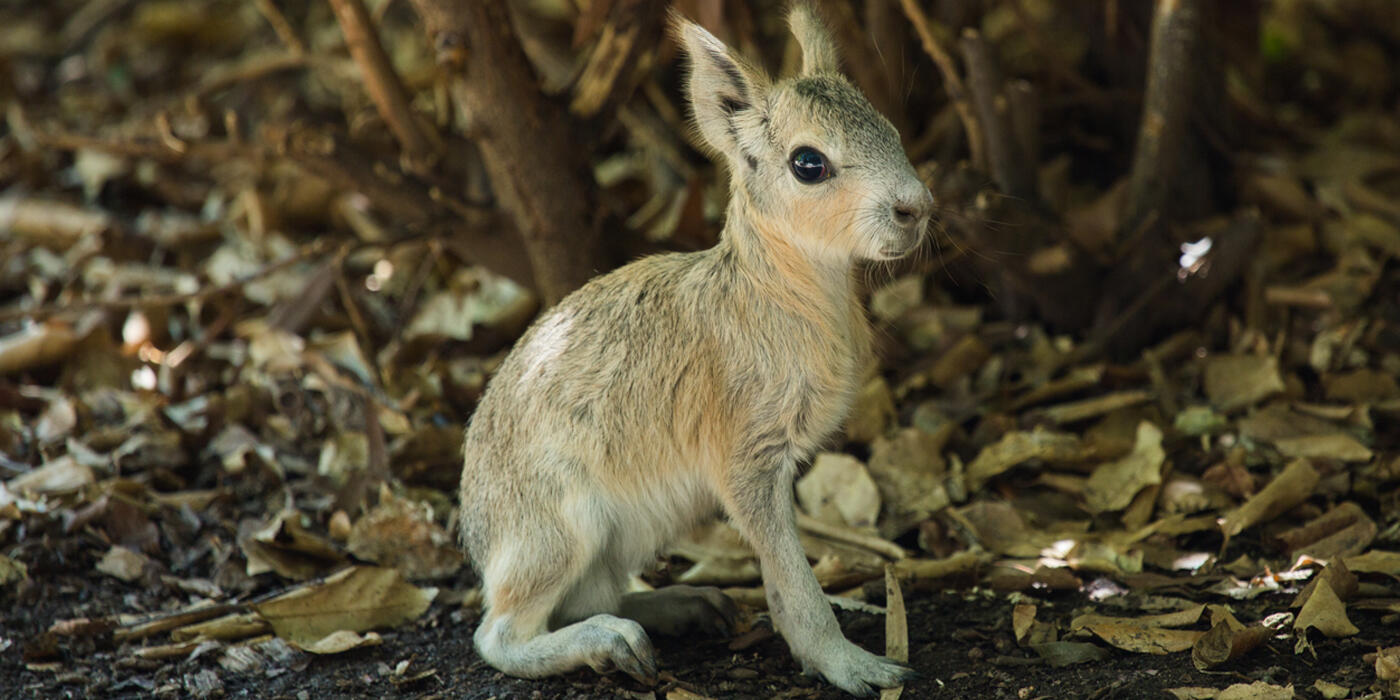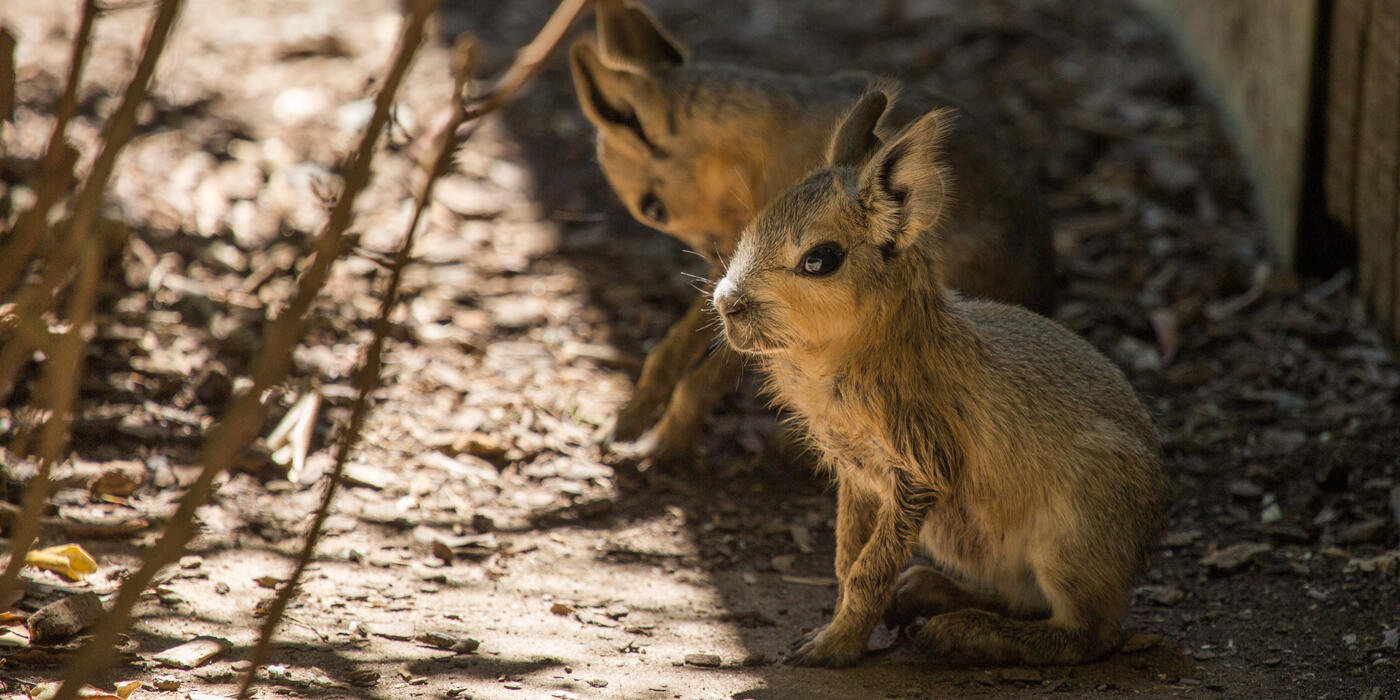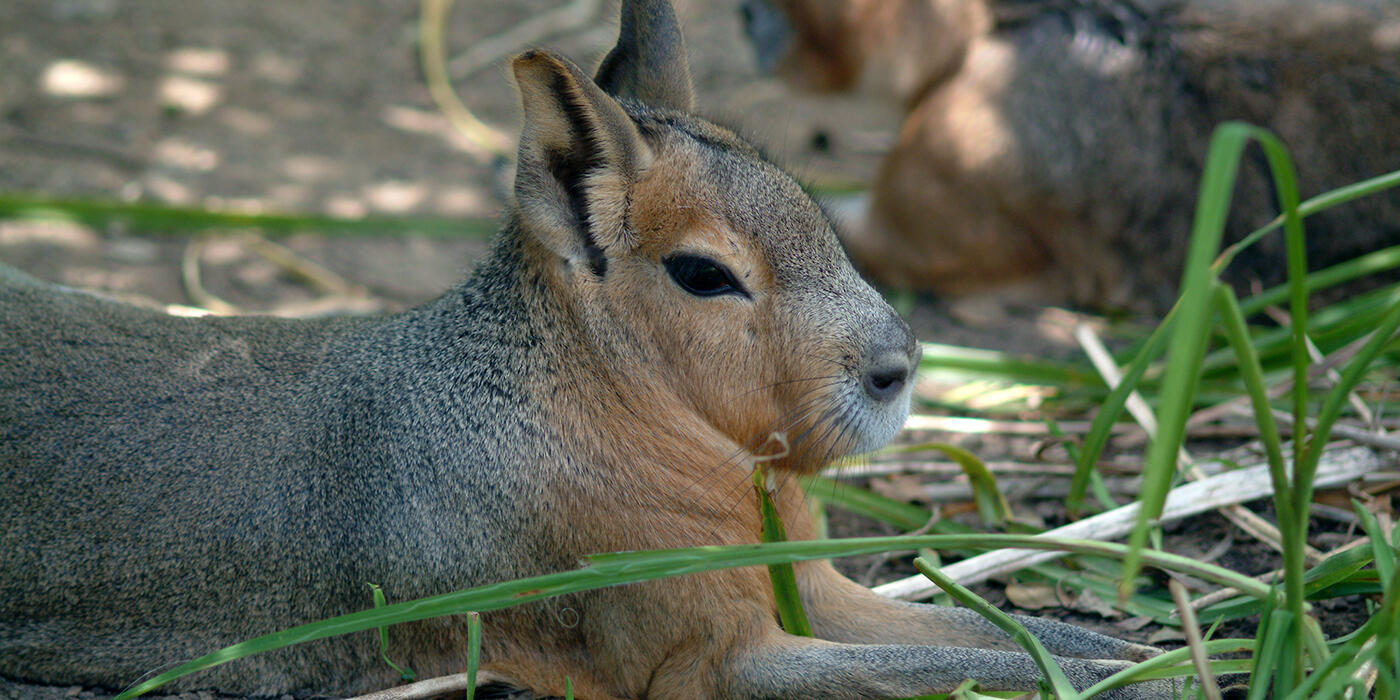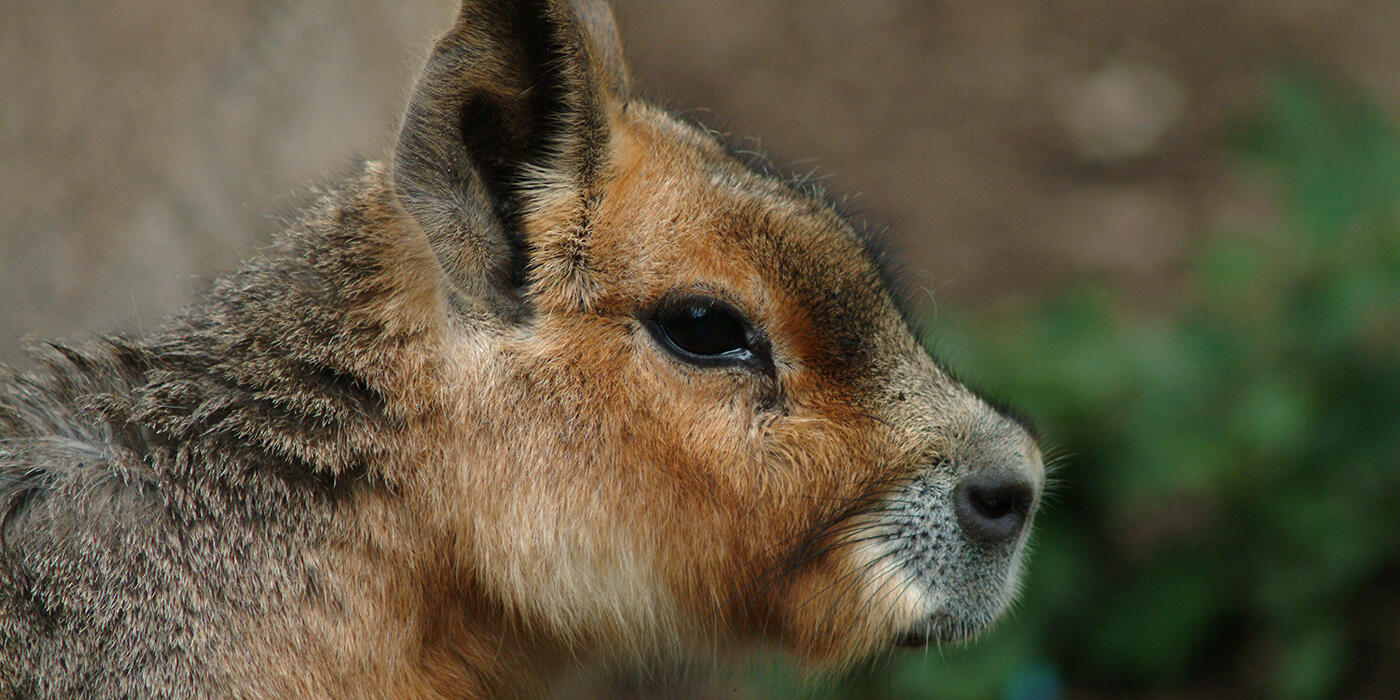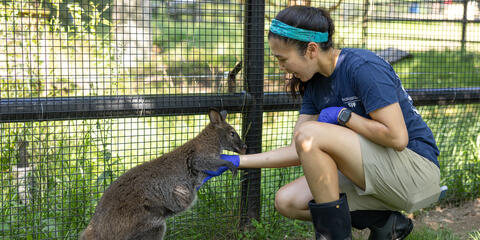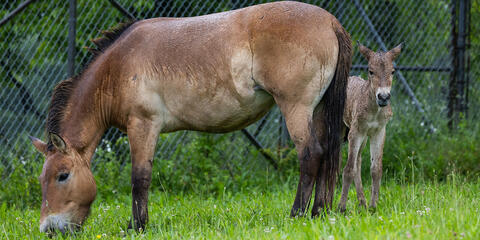Physical Description
The general form of Patagonian maras is that of a long-legged rodent with a body similar to a hoofed animal. Their coat is primarily grayish-brown, with a white patch along the chest and stomach and orange coloration around the flanks and head. It is darker toward the rump, with the exception of a bright white patch of hair that borders their hindquarters. Their coat is stiff, dense and very fine in texture. Patagonian maras have four toes on their front feet and three on their hind feet; each toe is equipped with strong claws. Their long ears, short tails and larger size set them apart from other species within the family Caviidae.
Size
Patagonian maras average 27.5 inches (70 centimeters) in length, with a tail of 1.5 to 2 inches (4 to 5 centimeters). They weigh between 17.6 and 35.3 pounds (8 to 16 kilograms).
Native Habitat
Patagonian maras inhabit central and southern Argentina. They prefer arid grasslands and brush lands with a great deal of open space. The home range of a mara pair can fluctuate greatly depending upon food availability; these drifting ranges typically amount to 242 acres (98 hectares). Maras move in a variety of ways. They may walk, hop in a rabbit-like fashion, gallop or stot — a unique form of locomotion typically exhibited by ungulates, where the animal bounces on all fours.
Lifespan
Patagonian maras can live for approximately 14 years in human care. Their lifespan in the wild is unknown.
Food/Eating Habits
Patagonian maras are herbivorous, primarily consuming grasses. They also frequently consume cactuses, as well as some seeds, fruits and flowers. Maras are also coprophagous, ingesting their own dung to maximize nutrient absorption. At the Smithsonian's National Zoo, maras are fed rodent chow, greens, fruits, vegetables, nuts and hay.
Social Structure
Patagonian maras are diurnal animals built for running. They travel in mated pairs, with the male aggressively protecting his mate from rivals and predators.
Reproduction and Development
Monogamous for life, Patagonian maras have a unique breeding strategy. Estrus occurs three to four times each year, for a window of only 30 minutes. Gestation lasts around 100 days, with the female typically giving birth to one to three well-developed young. Most maras in the wild produce only one litter annually, although maras in human care can give birth three to four times each year. Offspring are born out in the open but are quickly transferred into a communal burrow. This burrow can be shared with as many as 15 different mara pairs and their offspring. Because males are fiercely protective of their mates, only one mara pair occupies the burrow at any given time. With many young inhabiting the den, female maras recognize their offspring by size, sound and scent communication. Pups may attempt to steal milk from unrelated females, although they are often forcefully driven away. Females take on almost all direct care of their young, while males serve as sentries, protecting the den from potential predators. Young maras will nurse for much longer than most other rodent species — about 75 days — before being weaned.
Conservation Efforts
Patagonian maras are listed as near threatened on the IUCN Red List, as of a 2008 analysis. The Red Book of Mammals of Argentina also categorizes this species as vulnerable. Patagonian maras occur in at least 12 protected areas within their native range.
The South American lowlands in which maras reside are known as the Pampas. This habitat is rapidly declining. Hunting and habitat loss are the two of the greatest threats to Patagonian maras. The Argentinian agriculture industry has reduced the amount of available habitat for maras, as grasslands are converted into pastures.
Additionally, sheep farming has resulted in competition for resources among the two herbivorous species. Patagonian maras are also hunted for their skins. In Buenos Aires Province, these threats have resulted in the local extirpation of this species.
Help this Species
- Be a smart consumer. Choose products made with sustainable ingredients, such as Smithsonian certified Bird Friendly coffees, which support farmers striving to limit their impact on wildlife and habitat.
- Be a smart consumer! Avoid animal-skin products, even those marked “faux,” to ensure you’re not contributing to the illegal hunting of this species.
- Share the story of this animal with others. Simply raising awareness about this species can contribute to its overall protection.
- Growing, transporting and preparing food uses a lot of resources, so choose local, seasonal produce when possible. A significant amount of food waste also ends up in landfills, so only buy what you can eat.

